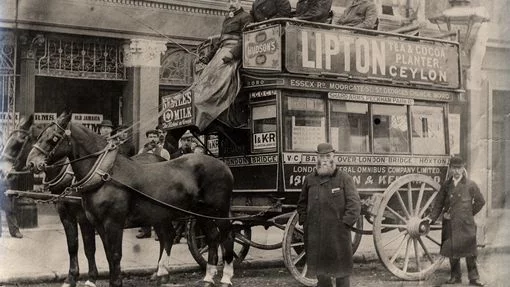
Why are London buses red?
Introduction
After the success of London’s first horse bus service in 1829, bus numbers grew quickly to over 400 in less than three years and continued to rise steeply. Services were unregulated, with operators naturally attracted to the most popular and profitable routes. They competed for passengers by undercutting the fares of their rivals and driving fares down.
In the 1840s operators started to cooperate and self-regulate, to limit numbers of buses on each route, agree timetables and share income from fares. They adopted a common name and colour schemes called liveries to identify routes, with the main districts served listed on the sides.
The route-sharing colour scheme system worked well until the 1900s. This was around the time the first sturdy workable motor buses started to appear, and the larger operators started to differentiate themselves from their Association partners. In 1905, the London Motor Omnibus Company adopted the fleet name ‘Vanguard’ and painted their vehicles predominantly red.
In 1907, the London General Omnibus Company (LGOC) adopted a ‘winged wheel’ symbol for their motor buses, soon followed by the ‘General’ fleet name, but without settling on a single livery.

When the LGOC took over Vanguard in 1908, the red livery, the ‘General’ fleet name and the wheel symbol came together to form a powerful brand. Red has been the colour of London buses ever since, becoming famous around the world. The winged wheel was also one of the precursors of the famous roundel symbol still used by Transport for London today.













